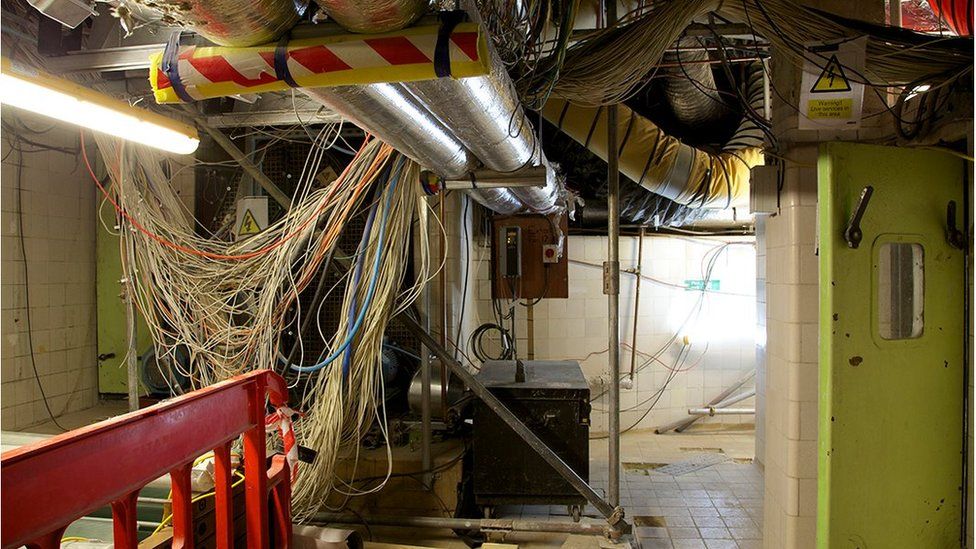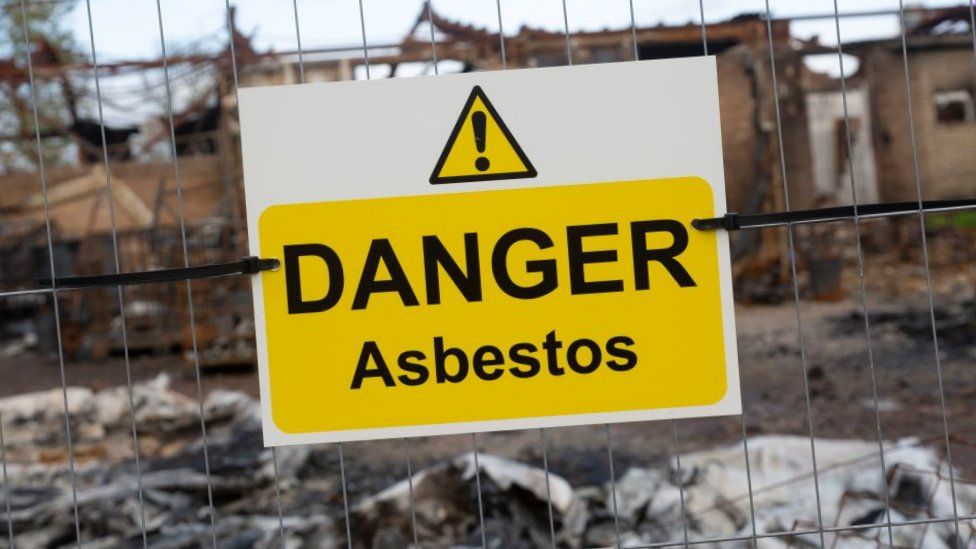
Former MP Alice Mahon died of a cancer linked to asbestos exposure. Now her son is calling for asbestos to be removed from all buildings to protect lives.
Asbestos is a material which if inhaled can cause cancer and is the biggest cause of work-related deaths in the UK.
Mrs Mahon, who died last year of malignant mesothelioma at the age of 85, was best known as a fiery Labour left-winger and a close ally of former Labour leader Jeremy Corbyn.
But the former Halifax MP also campaigned tirelessly for asbestos victims, backing calls for a public inquiry into the high incidence of asbestos-related disease amongst former power industry workers.
She said she had been exposed to asbestos when she worked as an auxiliary nurse at a West Yorkshire hospital in the 1960s and 1970s, an inquest was told in January.
She also believed she could have been exposed during the 17 years she spent in Parliament, the inquest heard.
Mrs Mahon’s son, Kris, tells the BBC: “Alice was very keenly aware of what was going to happen to her once she had her diagnosis.
“Her plans had to be replaced with a calm acceptance that death was coming.”
His mother lived next door to a plumber who also died from mesothelioma at the age of about 60. Additionally a young man who was a carpenter and builder and well known to the family died from mesothelioma.
“So we saw two hard-working men reduced to ghosts before their early deaths,” says Kris.
Asbestos is classified as being carcinogenic, which means it can cause cancer such as mesothelioma and other dangerous lung conditions when the fibres are inhaled.
Until it was banned in 1999, it was widely used as a building material for roofing, insulation, walls and flooring.
It remains present in buildings across the UK.
As long as the asbestos is in good condition and is not disturbed there is negligible risk, according to the Health and Safety Executive.
But if it is disturbed it can become a danger to health because asbestos fibres are released into the air and people may breathe them in.
Companies have a duty to prevent employees being exposed to the substance at work, under the Control of Asbestos Regulations 2012.
However, the regulations state that asbestos-containing materials that are in good condition and unlikely to be disturbed can be left in place.
MPs from all parties have campaigned for more action to get rid of asbestos, which can be a complex and costly process.
Last year, the Commons Work and Pensions Committee called for a strategy with a 40-year deadline to remove all asbestos from public and commercial buildings.
‘Ticking time bomb’
The government’s position was set out in April by Rishi Sunak, in answer to a question from Conservative MP Jane Hunt.
The prime minister said: “The law does require duty holders to assess whether asbestos is present, what condition it is in and whether it gives rise to a risk of exposure, and they must draw up a plan to manage that risk, which must include removal if it cannot be safely managed where it is located.”
Ms Hunt backs the charity Mesothelioma UK’s campaign for a register of all workplaces in the country that contain asbestos and a timetable for eradicating it.
The charity says the situation is a “ticking time bomb” and is asking the government to prioritise high-risk settings such as schools and hospitals.
Kris, who works as a professor of law in New Zealand, is also calling for more action from the government, arguing that asbestos should not be left in place.
“The government has a duty to protect lives from a known, indiscriminate killer such as asbestos: that requires proactive action to locate and remove asbestos,” he says.
“Asbestos is in many settings, often mingled with other products, and the argument is often put forward that it is best left in place because it is only a risk if it is disturbed.
“But the problem is that buildings deteriorate and need refurbishment, or are knocked down and replaced, and this will lead to asbestos being released in uncontrolled circumstances. The safest thing to do is remove the risk.”

In 2019 there were more than 5,000 asbestos-related deaths, including from cancers such as mesothelioma.
In January, an inquest ruled that Mrs Mahon “came by her death as a result of an industrial disease”.
Mrs Mahon had blamed the disease on her exposure to asbestos during time as a nurse at Northowram Hospital, in Calderdale, West Yorkshire, the inquest was told.
She had described in a compensation claim how the temporary huts she worked were made of corrugated asbestos sheets, that had been disturbed by maintenance work.
But she also believed she may have been exposed to the substance during her time as an MP, after being told after her retirement in 2005 that Parliament was “riddled with asbestos”.
Asbestos was identified in 680 rooms across the parliamentary estate in surveys carried out between 2019 to 2022 by the parliamentary maintenance services team.
A UK Parliament spokesperson says: “As with many historical buildings, asbestos is present – and appropriately managed. The risk to anyone on the estate is very low.”
The spokesperson added that any work posing an asbestos risk is “properly planned” in compliance with regulations.

However, the Public Accounts Committee recently released a report that found a growing list of health and safety incidents within Parliament, including some involving asbestos.
“There are already people on decades-long risk watchlists after being exposed to asbestos in the building,” warned the committee’s Labour chairwoman Dame Meg Hillier.
Regarding asbestos in Parliament, Kris says: “Every workplace, including such grand places as the Palace of Westminster, should be a safe place.
“The risks of asbestos are so well known now, and have been for decades, that steps to identify and remove asbestos from all workplaces should have been completed by now.
“At the very least, there should be detailed audit to determine the risks, which can no doubt be done alongside other refurbishment.”
The UK Health Security Agency says asbestos should not be removed without expert advice. People are advised to contact their local council for more information about its removal and disposal.
Related Topics
-
-
21 April 2022

-

